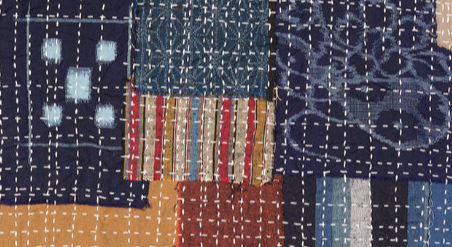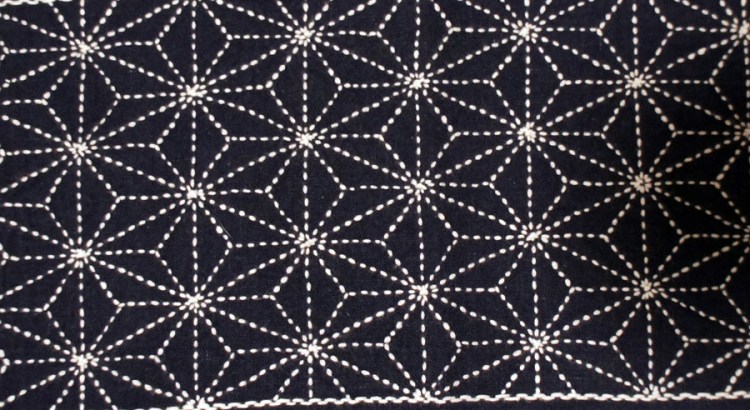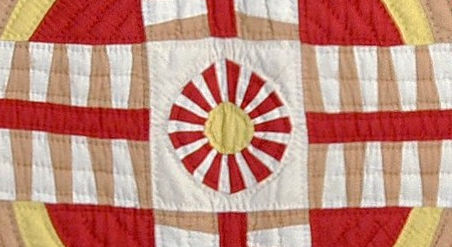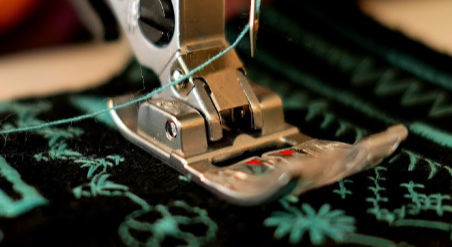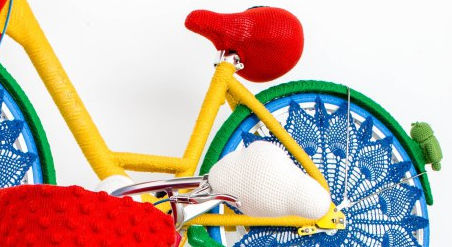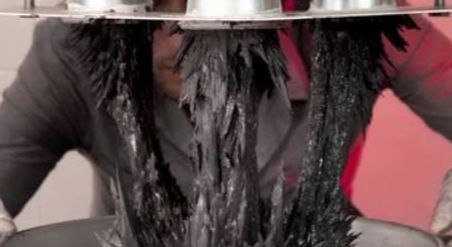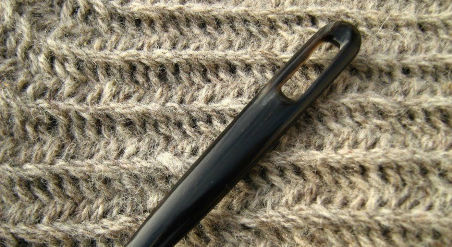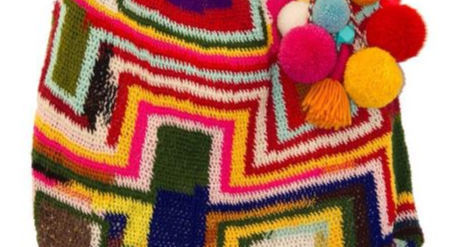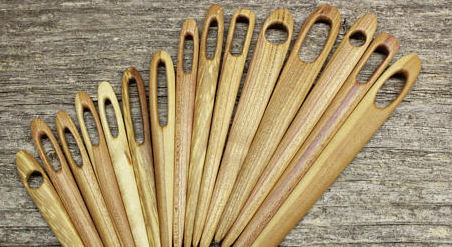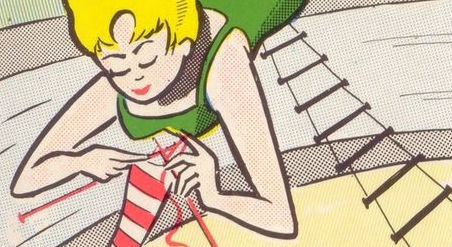Crafting on a Budget
I keep a list of projects I want to tackle in a crafting journal. There's the crazy quilt project I want to start, the pants I'd love to patch with denim and layer with Sashiko stitching, and the Newfoundland, Canada-style trigger finger mittens I'd love to knit.
Some projects are for the future - when I can afford to buy the material I need. The projects that move to the head of the line are the ones with a list of materials I can afford. A lot of times, I can afford them because I'm repurposing something I already own (like the gorgeous but stained linen shirt that gets turned into a favorite kitchen towel).
Other times, part of the fun and challenge is trying to see if I can make my project with little or no money up front.
So, how do I afford to make big projects on a limited budget? I go thrifting. I go on a hunting-gathering mission that unearths a treasure trove of materials to work with.
Thrifty Sourcing
Here in the US, we have many choices for finding items that are between homes. We can go searching at church sales, garage sales, neighborhood block sales, rummage sales, stoop sales, yard sales, swap meets, thrift stores, consignment stores, Goodwill bin stores, and Buy-the-Bag stores.
We can also find items through Craigslist, social media, online forums, auctions, storage auctions, online auctions (Ebay, Goodwill, Police), pawn shops, discount stores, 99 Cent stores, antique markets, friends, neighbors, and family members.
Phew! That’s a lot of places to look!
If you head to a thrift store you can be pretty sure you'll find some wool and cotton items you can use to craft into something new. Sometimes you can even find brand new items, deeply discounted. You just never know what you may come across.
If I want to go straight to a place where I’m sure to source some affordable cotton for a project, I head to my local Goodwill Bin store and pay $1.79 per pound for clothes and fabric.
Once I spot a color or pattern I like, I check to see if the item is 100% cotton, and in good shape. If I’m in luck, I can find enough good cotton to make a quilt top for under $10.
How to Upcycle Items
WOOL
Knitted items can be reused by either shrinking them or unraveling them. Purposefully shrinking knitted items creates a dense, matted fabric. To create this repurposed knitting, follow the instructions in How to Felt a Wool Sweater. The felted wool is a wonderful material for making blankets and mittens.
Sweaters and other knitted or crocheted items can be unraveled. The yarn from the unraveled item can be unkinked, and wound into skeins. The yarn can then be reused to make new knitted and crocheted items.
Read about a knitter who shops for his yarn at thrift stores. And get directions for preparing yarn for reuse.
Woven wool blankets and fabric can also be used to make patchworked quilts and hooked rugs.
COTTON
Cotton shirts, dresses, blouses, t-shirts and skirts can be repurposed into quilts and rag rugs.
If you're planning on upcycling fabric to make a quilt, simply wash, dry, and cut away any unusable areas of all your sourced pieces to prepare them for repurposing. You can follow instructions for making a quilt here.
If your intended project requires you to use a long, continuous type of fabric (like rag rugs), you'll need to create a yarn.
You can make repurposed fabric yarn out of cottons of all types, including denim. T-shirts can be cut and joined together to make a soft, stretchy yarn that will feel cozy underfoot as a rag rug.
You'll need to turn your sourced sweaters or fabric into continuous strips. For making rag rugs, you can cut strips of fabric into long lengths, and connect them by stitching or knotting
Below you'll see how to turn sweaters, denim, t-shirts, and plastic bags into yarn.
Turning Sweaters into Yarn
If you’re looking to knit using a certain color or a certain type of yarn, check out your favorite thrift or consignment store and look for a sweater that you can take apart.
If you’ve got an old knitted sweater that you’re about to toss, you might want to take the time to turn it into a skein of yarn that you can use on a project.
Below are videos of a a knitter (beckylee620) who explains in great detail which sweaters can be unraveled and turned into skeins of yarn.
If you want to work with wool and you come across something that doesn't have a label, you'll have to do some detective work to figure out whether it's wool or acrylic. Even if you're pretty good at being able to tell by touch, the best way to quickly categorize your yarn is to hold a lighted match under the end of a piece of the mystery yarn and look at the results. If it's acrylic, it will have formed a hard ball that will reveal that it's plastic.
There are other ways to determine what your yarn is. Wikihow's How to Tell Wool From Acrylic Yarn outlines a few tricks.
The Wikihow page also shows you how to "felt" two pieces of wool, a really handy way to join two strands of wool yarn together so you don’t have to make any knots to keep a continuous strand going. Felting involves separating wool ends into two pieces, joining four pieces together where two ends meet, moistening them, and rolling them together.
Using this felting joining wool method, you can gather yarn from the sleeves, front, and back of a sweater and have one continuous piece of yarn.
Turning Jeans Into Denim Yarn
Here’s how to make denim yarn from jeans via HanJan Crochet:
Turning T-Shirts Into Yarn
Here’s how to make t-shirt yarn via Sustain My Craft Habit:
Turning Plastic Bags Into Yarn
PLARN is yarn made from plastic bags, which is great for making items like strong, reusable shopping bags, and sleeping mats that are resistant to bugs. Instructions for making PLARN can be found on Plastic Bag Craft’s site. To the right of the instructions you'll find several links to plarn projects under Recent Posts.
Other posts you might like: How to Make a Plarn Bag, DIY Mindset, 5 Ways to Repurpose T-Shirts, and How to Make a Rag Rug.
POPULAR POSTS
Follow a tutorial for making a patchworked bag with Sashiko topstitching. | Follow tutorials for how to create traditional Japanese embroidery stitching. | Explore a library's digitized vintage maps, which you can download for free. | Learn from a museum textile curator how to best care for your quilts. |
Learn to make a basket weave pattern quilt from scraps of fabric. | Sisters Lorna and Jill Watt create amazing yarn bomb installations . | Ceramic artists create fantastical structures using magnetic clay. | Learn about a Viking fabric-making technique which pre-dates knitting. |
Follow a tutorial for making a bilum bag - PNG's traditional fabric. | Learn to make a pinhole camera; develop paper film with common items. | Learn about a stretchy fabric made with connected loops. | Free digitized knitting magazines 1800 - now. |
